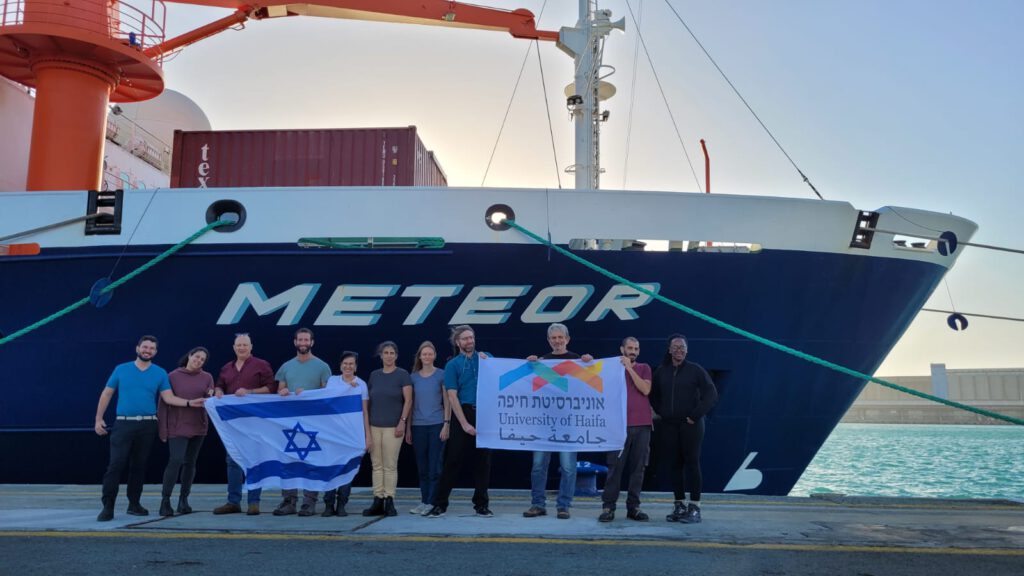8.1.2024
We recently celebrated the inaugural launch of the “Eastern Mediterranean Sea Centre – An Early-Warning Model-System for our Future Ocean” project, a collaborative effort with the Germany-based GEOMAR Helmholtz Centre for Ocean Research Kiel. This initiative focuses on investigating climate change and pollution in the Eastern Mediterranean Sea, utilizing it as a “living lab” to develop prediction models and enhance our understanding of climate change impacts on oceans. Led by Prof. Ilana Berman-Frank (Department of Marine Biology) and Prof. Yizhaq Makovsky (Head, Dr. Moses Strauss Department of Marine Geosciences), the Israeli research team, consisting of scientists from the Charney School of Marine Sciences and experts from additional institutes, continues to drive the project forward.
The eastern Mediterranean Sea is one of the most rapidly changing ocean basins on our planet impacted by both climate change and extensive human pressures. The eastern Mediterranean Sea will be used as an early warning and model system to examine ecosystem resilience and sensitivity of the future oceans under climate change. The International Helmholtz Lab EMS-FORE, based in Haifa and the eastern Mediterranean sea (as a natural laboratory), combines GEOMAR’s unique experience in investigating processes in global oceans with Haifa’s in-depth insights of the functioning of the eastern Mediterranean Sea. GEOMAR and HAIFA will utilize their knowledge and infrastructure to investigate ecosystem transitions in the eastern Mediterranean Sea. Led by Prof Eric Achterberg (GEOMAR) and Prof. Ilana Berman-Frank (U.of Haifa), a core team of around 30 researchers and students will study the Mediterranean Sea as an early-warning model system that focuses on what the state of climate change in the Mediterranean Sea tells us about future conditions in oceans worldwide. Multidisciplinary marine research will examine seafloor processes and sedimentary records to inform about the past, water column processes to tell us what is currently occurring, technological developments to better measure our oceans, and modeling work to examine what the future will look like for the Mediterranean Sea and the global oceans.
We will use world-class facilities, multiple technologies for ocean observations, experimental manipulations, research vessels, long-term moorings and deployments of underwater vehicles, novel cameras and chemical sensors, and marine ecosystem models to integrate the data and predict future oceanic responses.




